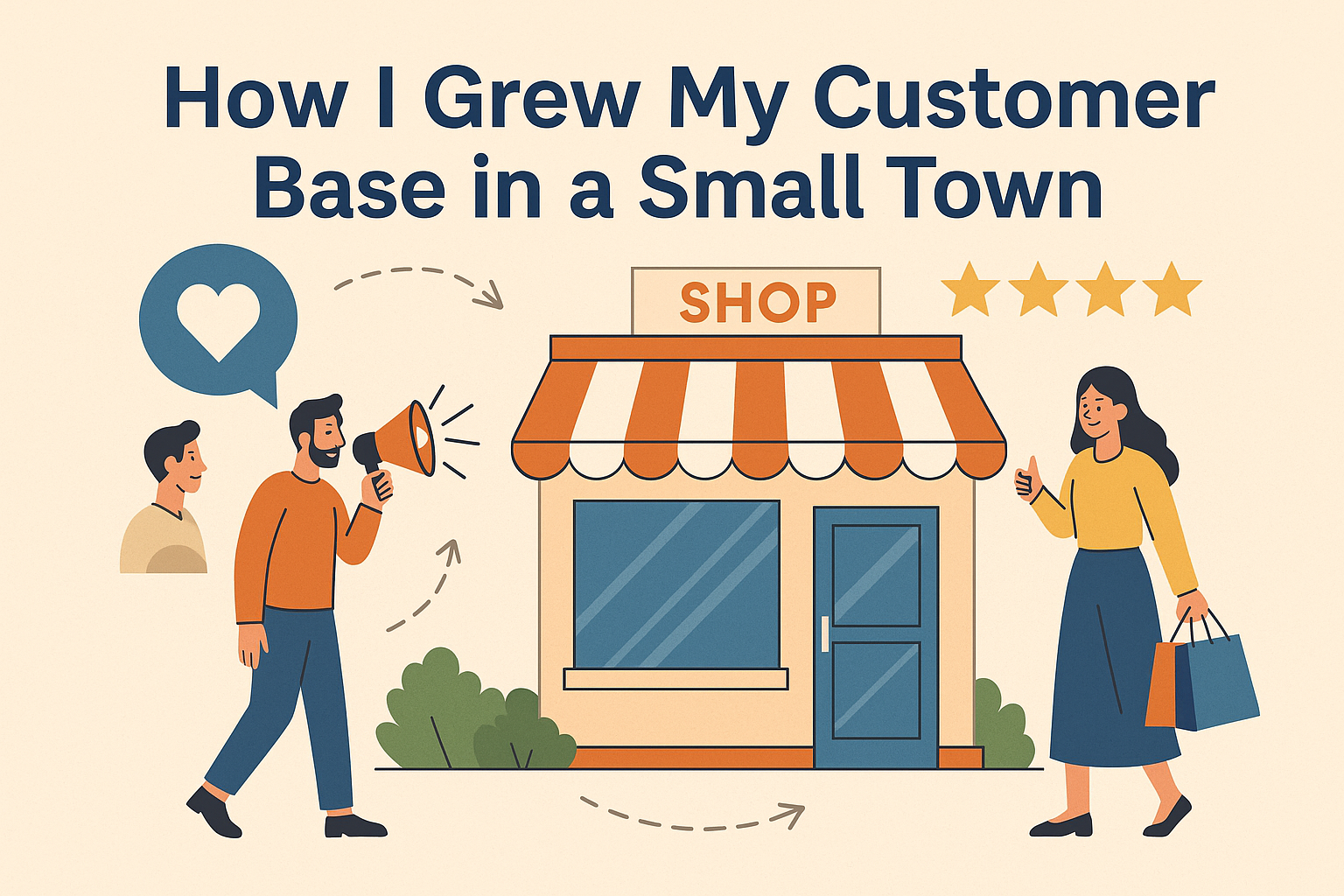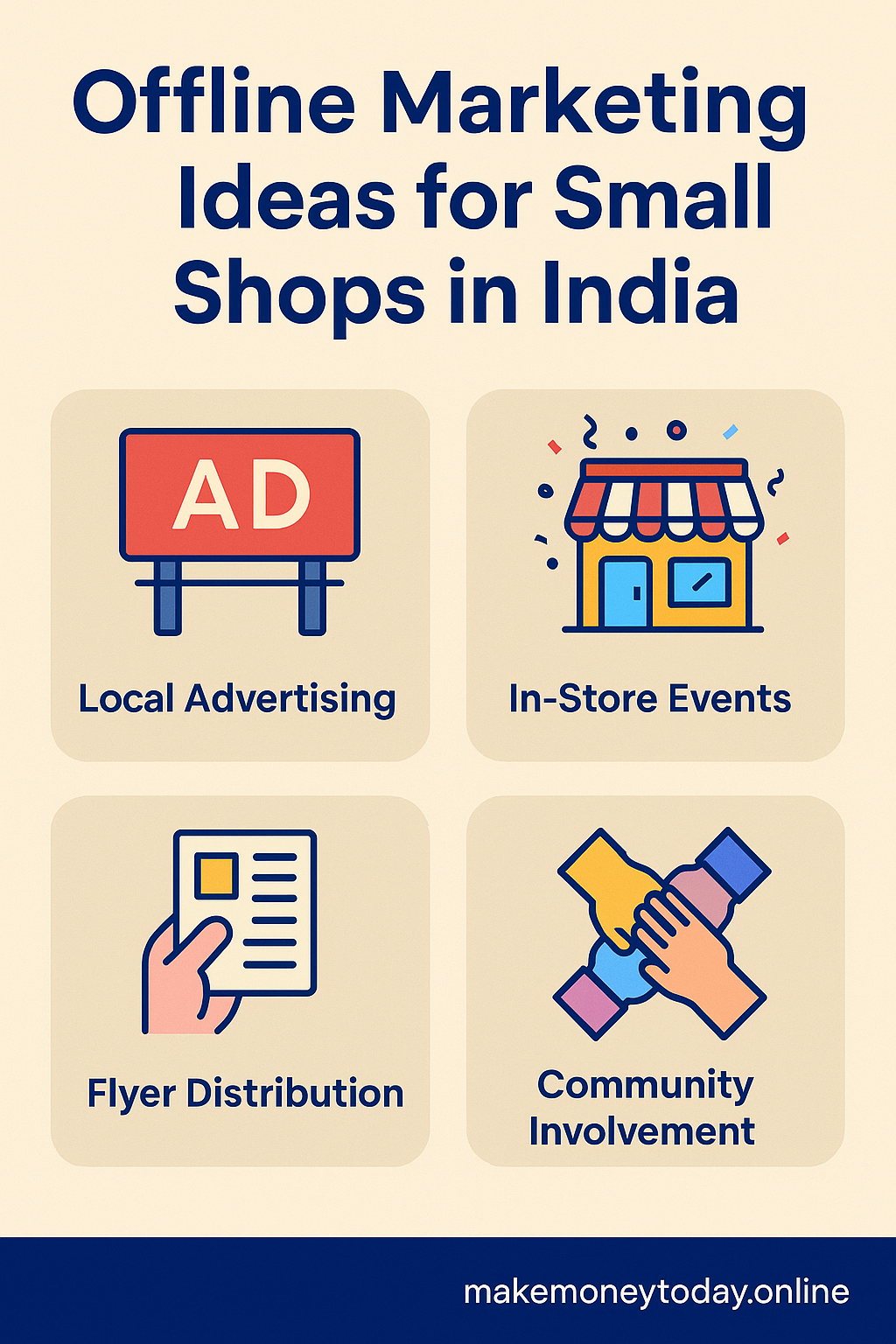How I Grew My Customer Base in a Small Town
Introduction
Starting and growing a business in a small town can feel like a slow journey, especially when compared to the fast-paced markets of big cities. But over time, I discovered that building a customer base in a smaller area comes with unique advantages—close-knit communities, word-of-mouth marketing, and lower competition.
In this blog, I’ll share my real-life experience of how I grew my customer base in a small town in Uttar Pradesh. Whether you’re running a Kirana store, tailoring service, mobile repair shop, or any other local business, these practical steps can help you build loyal customers right where you are.
Step 1: Understand the Local Market
Before selling anything, I spent time observing the market around me:
- What are people buying most?
- What is missing in the town?
- Where are people shopping currently?
- What price range do people prefer?
In my case, I noticed that although there were many general stores, very few offered home delivery or fresh packaged snacks. This gave me a unique selling point (USP).
Lesson: Small towns have unaddressed needs. Filling even one gap can make you stand out.
Step 2: Build Trust First, Sales Later
In cities, you can use aggressive advertising. But in small towns, trust is everything. People want to know who you are before they buy from you.
So I started with small gestures:
- Free samples for first-time customers
- Friendly conversations to introduce myself
- Offering help even if they didn’t buy anything
This slowly turned into regular foot traffic and word-of-mouth referrals.
Tip: Don’t focus on profit in the first 2–3 months. Focus on building relationships.
Step 3: Use WhatsApp to Stay Connected
Once I had a few regular customers, I asked if I could message them offers and updates via WhatsApp. Most agreed.
I set up a WhatsApp Business profile, created a product catalog, and used WhatsApp status to show new arrivals, discounts, and customer feedback.
By the end of 6 months, I had over 200 contacts who regularly saw my WhatsApp updates.
Pro Tip: Use WhatsApp broadcast lists (not groups) to message your customers privately.
Step 4: Take Advantage of Word-of-Mouth
In small towns, people talk. I offered small incentives to encourage referrals:
- “Refer a friend and get ₹10 off your next purchase”
- “Bring your neighbor and get a free gift”
I also made sure every customer had a good experience so they could confidently recommend my shop.
Example: One college student brought five of her friends after I gave her a free chocolate bar. That one act brought five new customers who became regulars.
Step 5: Be Active During Local Festivals
Every small town has local festivals, melas, school functions, and religious events. These are golden opportunities for visibility.
During Holi, I:
- Offered a “Buy 2 colors, get 1 free” deal
- Set up a stall at the local fair for ₹500
- Distributed flyers near temples and bus stops
This brought in over 100 new customers in just one week.
Tip: Time your promotions with local events, not just national ones.
Step 6: Make Your Shop a Friendly Space
People in small towns love familiarity. I kept my shop welcoming:
- Clean and organized display
- Small seating area for elders
- Cold water in summer
- Light music or devotional songs playing softly
Soon, customers were stopping by even if they didn’t need anything urgent. That led to more casual purchases.
Step 7: Collaborate with Other Local Businesses
Instead of competing, I collaborated:
- Tailor shop referred clients to my readymade garments
- I promoted the nearby mehendi artist during Karwa Chauth
- A sweet shop near me put my pamphlet on their counter
Each partner brought me new customers, and I returned the favor.
Lesson: In small towns, teamwork grows the entire market.
Step 8: Use Simple Local Advertising
Big hoardings weren’t in my budget. So I did the following:
- Pamphlets: Printed 1000 for ₹800 and distributed them outside schools and markets
- Posters: Stuck on electric poles (with permission) and pan shops
- Word of mouth: I asked happy customers to tell others
I also joined local Facebook groups and WhatsApp groups related to the town.
Low-cost win: ₹1000 worth of simple local ads got me ₹5000+ worth of business.
Step 9: Keep a Feedback Notebook
I kept a simple notebook asking three questions:
- What do you like about our service?
- What can we improve?
- Would you recommend us?
After a month, I had helpful suggestions like:
- “Offer more delivery options”
- “Include snacks for kids”
- “Add mobile recharge services”
I made changes, and people appreciated the fact that I listened.
Step 10: Treat Every Customer as Special
In big cities, customers often feel like just another number. In small towns, personalized attention goes a long way.
I remembered:
- Customers’ names and preferences
- Kids’ favorite snacks
- Festival greetings and birthdays
Some customers became close friends and ambassadors for my brand.
Result: I earned not just customers—but lifelong supporters.
Final Results After One Year
Here’s what happened after following these steps consistently:
| Timeline | Customers | Monthly Sales | WhatsApp Contacts |
|---|---|---|---|
| Month 1 | 20 | ₹8,000 | 10 |
| Month 3 | 100 | ₹25,000 | 80 |
| Month 6 | 250 | ₹60,000 | 200 |
| Month 12 | 500+ | ₹1.2 Lakhs | 400+ |
My shop was no longer just another store—it became a known name in the town.
Key Takeaways
- Focus on building relationships before profits
- Use WhatsApp to keep in touch and sell updates
- Keep your shop customer-friendly and engaging
- Use festivals and events to grow your visibility
- Partner with others and learn from feedback
- Be consistent and stay visible—offline and online
Conclusion
Growing a customer base in a small town is a mix of patience, creativity, and community-building. It’s not about flashy marketing or deep discounts. It’s about becoming a part of the local life, one customer at a time.
If you’re starting your own business in a small town, trust the process. Focus on serving honestly, listening to your customers, and making them feel valued. In time, your reputation will bring people to your door—just like it did for me.
You don’t need a big city to build a big brand. You just need local love, and that starts with how you treat every single customer.
Start today. Your first loyal customer might just walk in tomorrow.



